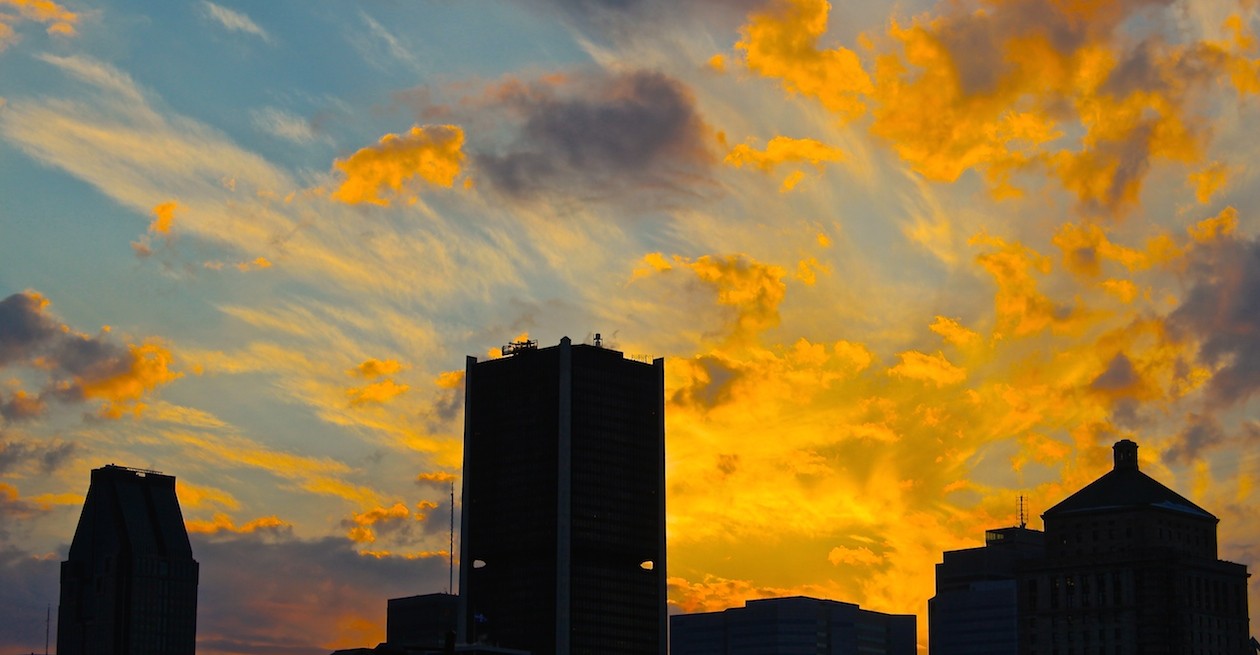
Man I love looking at this picture.
I mean I hate it as well – what a massive wasteland of parking lots. Look at it!
Today the area is considerably different. Boul. de Maisonneuve was literally carved out of existing cityscape back in the early and mid-1960s at the same time as the Métro tunnel was carved out of the bedrock almost directly beneath. I can understand the argument against this kind of destructive construction in general, but I feel that the city, and this sector in particular, actually benefited immensely from this development.
For one, Boul. de Maisonneuve now serves as a prominent link between diverse neighbourhoods – from NDG/St-Raymond through Westmount, Atwater, the Shaughnessy Village, New Chinatown, the Concordia Ghetto, Crescent Village right into Uptown Montréal, the area largely re-developed as a consequence of Boul. de Maisonneuve’s construction (back in the 1970s it was referred to as Place du Centre and I believe part of the Master Plan would eventually lead to McGill College’s redevelopment in the mid-late 1980s). Extending East, Boul. de Maisonneuve further links up with the Quartier des Spectacles, the Lower Main, the Habitations Jeanne-Mance & Quartier Latin etc. It’s a belt, and this city needs multiple East-West arteries simply to help move the millions of people who flood into the city centre each day.
It’s unfortunate that this sector was developed almost exclusively to serve the skyrocketing demand for retail corporate office space in the 1970s and 1980s, and I think a major fault in that plan – lack of residential housing – is at least partially responsible for the Tremblay administration’s aim to build residential buildings primarily in remaining parking lots in this area. Again, there’s a problem in that most of the new development is condominiums, while the area needs mixed housing and social-services (primary and secondary schools, cultural/community space etc) in order to be a viable neighbourhood with a distinct character, considerations which are vital to its long-term survival.
That being said, we’ve come a long way from above. I would have hated this area back then – I wouldn’t have been able to walk through it without obsessing as to why no one had put a park here (and I think we can all agree this area could use some more public green space). Today, it seems dynamic, clean and well-used. During the day it bustles and it’s pretty clear that the sector is of vital importance to the city’s economy.
What do you think about this picture? Have we been moving in the right direction? Let me know – I’d love to get a better understanding of what the readership honestly thinks about new development in Montréal.


Hi –
Thanks for the comment. I recommend strolling around McGill College, President Kennedy and Boul. de Maisonneuve (towards Drummond) on a weeknight, when there’s fewer people around and it’s a little cooler. Take a moment to just look around. I think it’s pretty classy section of the city, impressive in its scale, vistas, and general upkeep – attractive. However, it can get a bit dull – there’s not much vibrancy to the area, something I think could be changed with new residential projects, a major performance venue, a hotel, and in general more 24-hr services (cafés, diners, deps etc). It’s kinda shitty below Sherbrooke, North of de Maisonneuve from McGill College to Aylmer – but that’s only because nothing’s really open around there after 9pm and no one lives there; there are two large parking lots in the area which I’d love to see turned into apartments.
It’s funny – all the postponed new construction in the city was slated for parking lots. The only thing there pushing ahead with right now will see old buildings demolished. Doesn’t make much sense eh?
Any mid-west cities in particular you can think of that share this problem?
Wow! This photo is a real surprise to me. By the time I first came to Montreal in the Eighties, it had transformed totally, for the better. Having come from a midwestern United States city that was all too afflicted with what one writer referred to as “urban mange” (bare, vacant patches in the city fabric), I was very impressed by Montreal’s vibrant, hopping downtown. Mind you, there are still far to many vacant parking lots just begging for useful and aesthetically pleasing development in Centreville (Boulevard Rene Levesque near rue Guy comes to mind). Yet this photo is strong evidence that Montreal is definitely headed in the right direction.